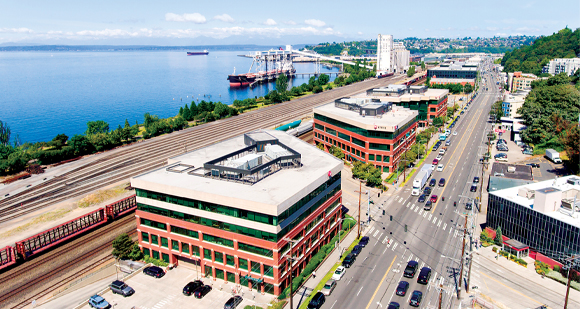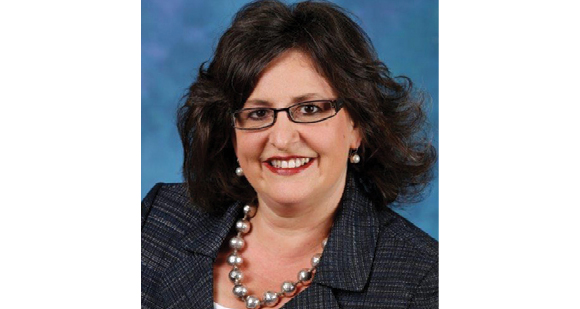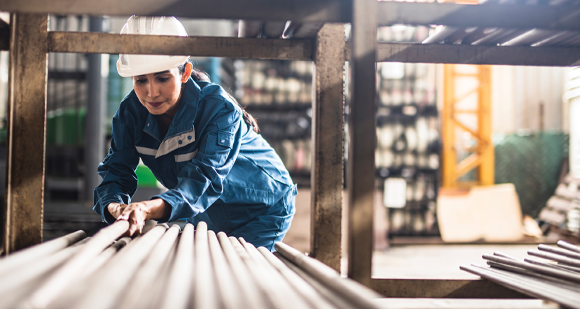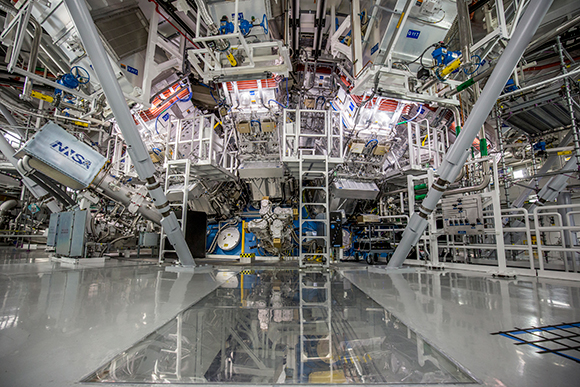|



|
FROM SITE SELECTION
MAGAZINE, NOVEMBER 2022 ISSUE
|

|
WASHINGTON
Life sciences and the science of good living offer a heady blend in
Washington.
|
|

|
ASSOCIATION UPDATE
A letter from the chair, and insights into energy reduction and
decarbonization in the industrial arena.
|
|
 
|
|
UNCTAD’S Handbook of
Statistics 2022 was released earlier this week, filled with data
on everything from international merchandise and services trade to
global marine transport to price trends and population (expected to
surpass 8 billion before year’s end). It also contains foreign direct
investment data.
“Global FDI flows in 2021 were US$1.6 trillion, up 64.3% from the
exceptionally low level in 2020,” UNCTAD reports. “In 2021, developed
economies more than tripled their investment abroad to US$1.3 trillion,
from US$408 billion in 2020. The value of FDI outflows from developing
economies rose by 17.8% to US$438 billion. Developing Asia and Oceania
remained a major source of investment flows even during the pandemic.”
Asia and Oceania accounted for remarkable FDI inflow growth too, as it
“rose to an all-time high for the third consecutive year, reaching
US$619 billion, an increase of 19.3%.” FDI to developing Asia and
Oceania, the largest recipient region of FDI, accounted for 39.1% of
global inflows. FDI flows to Africa reached US$83 billion – also a
record – from US$39 billion in 2020, more than doubling the 2020 level.
And FDI inflows rose by 56% to US$134 billion in the developing
economies of the Americas, “recovering part of the ground lost in 2020,”
UNCTAD stated.
Below are the Top 20 countries by value of FDI inflows and outflows. Top
10 finishers on the inflows list that are absent on the outflows list
include India, South Africa and Mexico. The Conway Data Projects
Database indeed shows that of the 290 qualifying major facility projects
from India-based companies we’ve tracked since January 2021, 227 of them
(78%) were staying in fast-growing India. Exceptions include Granules
India’s just-announced pharmaceutical distribution center in Prince
William, Virginia, and a 50-job HQ in Little Rock, Arkansas, from
Sequretek IT Solutions earlier this year. Nearly 92% of Mexican
companies’ 159 projects during that time frame are staying home, with
major exceptions from such giants as Grupo Bimbo, which is investing
$430 million and creating 320 jobs in Zanesville, Ohio. Among the 28
major facility projects from South African companies tracked during that
time, 21 of them (75%) are in South Africa, with exceptions such as
chemical company AECI’s investment in Benton, Illinois; Advanced 4×4
Solutions’ 100-job project in Woodward, Oklahoma; and, you guessed it,
several projects landing in India. — Adam Bruns
Top Countries by Value of FDI Outlows, 2021*
| Rank |
Economy |
Value (US$B) |
Ratio to GDP (%) |
| 1 |
United States of America |
403 |
1.7 |
| 2 |
Germany |
152 |
3.6 |
| 3 |
Japan |
147 |
3 |
| 4 |
China |
145 |
0.8 |
| 5 |
United Kingdom |
108 |
3.4 |
| 6 |
Canada |
90 |
4.5 |
| 7 |
China, Hong Kong SAR |
87 |
23.6 |
| 8 |
Russian Federation |
64 |
3.6 |
| 9 |
Ireland |
62 |
12.7 |
| 10 |
Korea, Republic of |
61 |
3.4 |
| 11 |
Singapore |
47 |
12.3 |
| 12 |
Belgium |
46 |
7.7 |
| 13 |
Netherlands |
29 |
2.9 |
| 14 |
Luxembourg |
25 |
29.9 |
| 15 |
Saudi Arabia |
24 |
2.9 |
| T16 |
Brazil |
23 |
1.4 |
| T16 |
United Arab Emirates |
23 |
5.4 |
| 18 |
Denmark |
22 |
5.7 |
| 19 |
Sweden |
20 |
3.3 |
| 20 |
Thailand |
17 |
3.4 |
*excluding Caribbean financial centers
Top 20 Host Economies by Value of FDI Inflow, 2021*
| Rank |
Economy |
Value (US$B) |
Ratio to GDP (%) |
| 1 |
United States of America |
367 |
1.6 |
| 2 |
China |
181 |
1 |
| 3 |
China, Hong Kong SAR |
141 |
38 |
| 4 |
Singapore |
99 |
25.7 |
| 5 |
Canada |
60 |
3 |
| 6 |
Brazil |
50 |
3.1 |
| 7 |
India |
45 |
1.4 |
| 8 |
South Africa |
41 |
10.9 |
| 9 |
Russian Federation |
38 |
2.2 |
| 10 |
Mexico |
32 |
2.5 |
| 11 |
Germany |
31 |
0.7 |
| 12 |
Israel |
30 |
6.3 |
| 13 |
United Kingdom |
28 |
0.9 |
| 14 |
Sweden |
27 |
4.3 |
| 15 |
Belgium |
26 |
4.3 |
| T16 |
Australia |
25 |
1.5 |
| T16 |
Poland |
25 |
3.7 |
| T16 |
Japan |
25 |
0.5 |
| 19 |
United Arab Emirates |
21 |
4.9 |
| 20 |
Indonesia |
20 |
1.7 |
*excluding Caribbean financial centers
|
|
 
|

|
RETURN TO OFFICE
Experts share practical tips for deciding this hot-button issue.
|
|

|
SITE SELECTION
Asking the right questions leads to the best outcomes, says exclusive
contributor Raymond W. Perez of Fisher Phillips, especially when it
comes to your future workforce.
|
|
|
SITE SELECTION
RECOMMENDS
|

|
Wells Enterprises’ best-known brand is Blue Bunny. Yum.
Archive photo courtesy of Wells
|
|
An era came to an end (or, if you like, reached a new
beginning) when it was announced last week that Wells
Enterprises, the Iowa-based maker of Blue Bunny ice cream
and the legendary Bomb Pop among other treats, had reached
an agreement to be acquired by Luxembourg-based conglomerate
The Ferrero Group. The buyer, launched as a family company
in 1946 with a pastry shop in Alba, Italy, is a relative
upstart in comparison to Wells, which was founded in 1913 as
a dairy delivery wagon business and has since become the
world’s largest family owned and managed ice cream company.
“In Le Mars,” Lesley Bartholomew, director of corporate and
employee communications for Wells, told me six years ago when Site Selection
also was recognizing the Sioux City metro area as a Top
Metro, “life truly is sweet.”
Site Selection readers will recall Gary Daughters’ March 2022 interview with Mike
Wells, member of the founding family and current CEO
and chief engagement officer, when Site Selection was
recognizing the Sioux City metro area as a Top Metro. “We
are a 100-year-old company focused on adapting for the next
100 years,” said Mike Wells last week. “Ferrero is a
likeminded company with a commitment to providing
high-quality, premium sweet-packaged food products that
bring joy to consumers around the world.” Wells has offices
in Le Mars and production operations in Le Mars; Henderson,
Nevada; and Dunkirk, New York. “For over a century, Wells
Enterprises has been an outstanding corporate citizen in the
Siouxland tri-state metro, and we do not expect that to
change in any way,” Chris McGowan, president of the
Siouxland Chamber of Commerce / The Siouxland Initiative,
told me in an email this morning. “Over the years, the Wells
family and their executive leadership team declined
countless unsolicited offers because they wanted to be
certain that any entity that acquired the company would
share their values, as well as their commitment to
community. The key decision-makers at Wells believe that
they have identified and selected the ideal partner in the
family-owned Ferrero Group, which has indicated that Wells
will remain a stand-alone business with offices in Le Mars,
Iowa.”
As for the buyer, “this deal continues the Ferrero Group’s
expansion agenda in North America following the successfully
managed acquisitions of Fannie May (2017), former Nestlé
U.S. confectionery business and Kellogg company’s cookies
and fruit snacks businesses (2018),” the announcement
stated. The company also acquired Ferrara Candy Company
(2017) — manufacturer and U.S. candy market category leader
of Nerds, Trolli, Sweet-tarts and Black Forest — and has
established a new Innovation Center and R&D Lab in Chicago,
as well as pursued two major expansions to its Bloomington,
Illinois, plant. Ferrero and its related parties now count
more than 8,000 employees, nine offices and 18 plants in
North America. — Adam Bruns
|
|
|
Belgium
Solid-state lithium cell technology company SOLiTHOR, based in Genk,
Belgium, this week entered into a 10-year contract with Punch Powertrain
nv to establish a European Centre of Excellence for solid-state lithium
batteries at its site in Sint Truiden, Belgium. The company will move
into the plant in January 2023 and will start pre-production of its
solid-state cell technology later in the new year. “SOLiTHOR can now
move swiftly to upscale the production and manufacture of our
solid-state lithium batteries with the support of our investors,” said
Huw Hampson-Jones, founder and CEO of SOLiTHOR. “It means moving forward
towards the commercialization of our cell and battery systems
technology. This is a significant step forward not only for Belgium, but
for Europe as a whole and means being less dependent on Asia or the
United States.” The building the company is moving into is owned by LRM,
which also owns a local airstrip in Sint Truiden that SOLiTHOR hopes
“will be used to develop and test aerospace and defense battery systems
in the future.”
Egypt
Counselor Mohamed Abdel-Wahhab, CEO of Egypt’s General Authority of
Investment and Free Zones (GAFI), participated last week in laying the
foundation stone for the first Beko factory in the Middle East, with
investments estimated at $100 million to produce home appliances in 10th
of Ramadan City. Beko is a subsidiary of Turkish conglomerate Arçelik
Group and one of the 10 largest companies in the world for household
appliances, operating in more than 100 countries with 28 factories and
12 brands. Production is expected to begin quickly, with the manufacture
of washing machines and electric ovens projected to commence during the
fourth quarter of 2023. A GAFI release said the authority “is currently
negotiating with the company to increase its activities in Egypt by
adding new production lines that include air conditioners and
televisions, as well as studying to inject new investments in the field
of engineering industries by the global Arçelik Group.”
|
|

|
Two days ago, the U.S. Department of Energy (DOE) and DOE’s National
Nuclear Security Administration (NNSA) announced the achievement of
fusion ignition at Lawrence Livermore National Laboratory (LLNL) — “a
major scientific breakthrough decades in the making that will pave the
way for advancements in national defense and the future of clean power,”
said the lab, located in Livermore, California, halfway between the Bay
Area and Tracy. This photograph shows the target chamber of LLNL’s
National Ignition Facility, where 192 laser beams delivered more than 2
million joules of ultraviolet energy to a tiny fuel pellet to create
fusion ignition on Dec. 5, 2022. Fusion is the process by which two
light nuclei combine to form a single heavier nucleus, releasing a large
amount of energy. “In the 1960s, a group of pioneering scientists at
LLNL hypothesized that lasers could be used to induce fusion in a
laboratory setting,” a lab release stated.
“The pursuit of fusion ignition in the laboratory is one of the most
significant scientific challenges ever tackled by humanity, and
achieving it is a triumph of science, engineering, and most of all,
people,” LLNL Director Dr. Kim Budil said. “Crossing this threshold is
the vision that has driven 60 years of dedicated pursuit — a continual
process of learning, building, expanding knowledge and capability, and
then finding ways to overcome the new challenges that emerged. These are
the problems that the U.S. national laboratories were created to solve.”
|
| |

